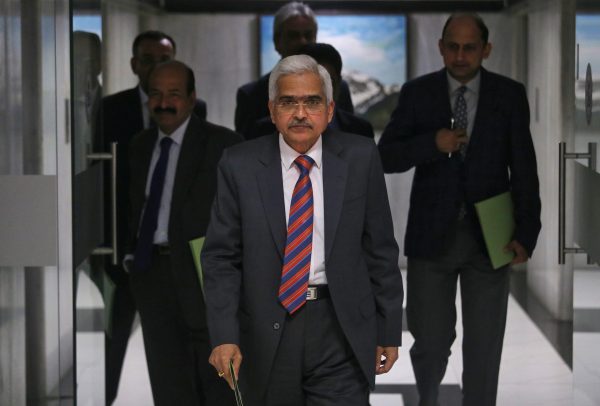The recent NPA crisis has been accompanied by a sharp decline in investment growth and a significant economic slowdown. Among the many factors that the crisis has been attributed to, a critical one is the dominance of government-owned banks in the system. In India, government-owned banks, or public sector banks (PSBs), account for 70 per cent of bank loans. During the recent banking crisis, they were hit worse than private and foreign banks and accounted for 90 per cent of the total NPAs. The PSBs had to make provisions for these bad loans, resulting in the erosion of their capital.
The government had to re-capitalise the banks. The total amount of capital infused by the government in PSBs since 2008–09 is Rs 3 trillion (US$42 billion) — 2 per cent of India’s GDP. For a government that is committed to fiscal consolidation, this is a serious fiscal drag.
There are deep institutional issues with these PSBs which came into being in 1969 as a result of bank nationalisation. For the first 25 years, PSBs enjoyed a near-monopoly in Indian banking with a share of over 90 per cent. The only other banks were the old private banks that were deemed too small to be nationalised and a few foreign banks.
During this period, great homogenisation of the PSBs occurred under government ownership. Management structure and human resources policies including compensation and governance were standardised. The senior management pool became fungible across the banks. At the end of this process, PSBs operated as one entity with over 25 different names.
In 1991, India launched economic liberalisation and privatisation. As part of the various liberalisation initiatives, new bank licenses were issued to private sector players who started operating in the mid-1990s. By the early 2000s, they emerged as credible competitors for the PSBs. As the new private banks began challenging the PSBs, the weaknesses entrenched in PSBs over three decades under government control became apparent. They lacked any competitive advantage.
The PSBs suffer from poor governance. The boards of these banks are weak and provide little oversight. Government ownership means the banks are vulnerable to the influence of politicians and bureaucrats. Political interference to approve loans to ‘connected’ borrowers is a problem, especially in infrastructure projects where the borrowers have a good relationship with the government.
The PSBs are also used as instruments of government schemes and programs. This weakens internal governance. In the past few years, the government has driven two schemes aggressively — the Jan Dhan Yojana and the Mudra scheme.
The first is a liability side scheme where accounts are opened for unbanked customers with few conditions such as minimum balances. The latter is a lending scheme for micro and small enterprises. While the intent for both these schemes seems noble, scant attention has been paid to their commercial viability. PSBs have been implementing them without any credible business case.
PSBs also have insufficient risk management. Large loans are presented directly to the boards of the banks without being thoroughly assessed by a risk management team — a practice that is standard in well-run private banks. Risk management teams in most PSBs tend to be weak.
The root of the challenge faced by PSBs lies in the government’s approach as owner and manager. These banks are expected to behave like competitive commercial entities when facing customers and like government departments in other aspects of their functioning. For PSBs to be competitive, each needs to develop its strategy and prioritise customer segments, geographies and products. Under the homogenising force of government ownership, doing so is very difficult.
All these structural problems culminated in the severe ongoing NPA crisis.
PSBs suffer from an inability to resolve bad loans. This is partly because public sector bankers have little incentive to recover loans. There are also huge disincentives. Resolving a bad loan in a commercially efficient manner — taking a haircut early on and closing the loan — can put the bankers in serious personal trouble with allegations of impropriety. On the other hand, delaying recognition and avoiding any commercially sensible settlement is a relatively safer choice. Consequently, incentives for PSB officers have been stacked against quick resolution.
The Reserve Bank of India (RBI), as the official banking regulator, is required to discipline, regulate and supervise government-owned banks. The RBI has pursued lighter supervision of the PSBs. This further exacerbated the NPA crisis as the RBI allowed the banks to defer recognition of the bad news through various restructuring schemes.
The Indian government has recently taken steps to merge PSBs. This reduces the number of PSBs and makes governance easier. But it does not address the institutional decay that requires more radical reforms — such as privatisation. The NPA problem is less severe in the private sector banks compared to the PSBs.
India needs a well-defined framework for resolving failed financial firms. Such a framework was proposed by the draft Financial Resolution and Deposit Insurance bill but has been withdrawn by the government. Over and above privatisation of PSBs, issues in the Indian banking sector need to be resolved through comprehensive governance and banking regulation reforms.
Rajeswari Sengupta is Assistant Professor at the Indira Gandhi Institute of Development Research (IGIDR), Mumbai.
Harsh Vardhan is Executive in Residence at the Centre of Financial Studies of the SP Jain Institute of Management and Research (SPJIMR), Mumbai.

